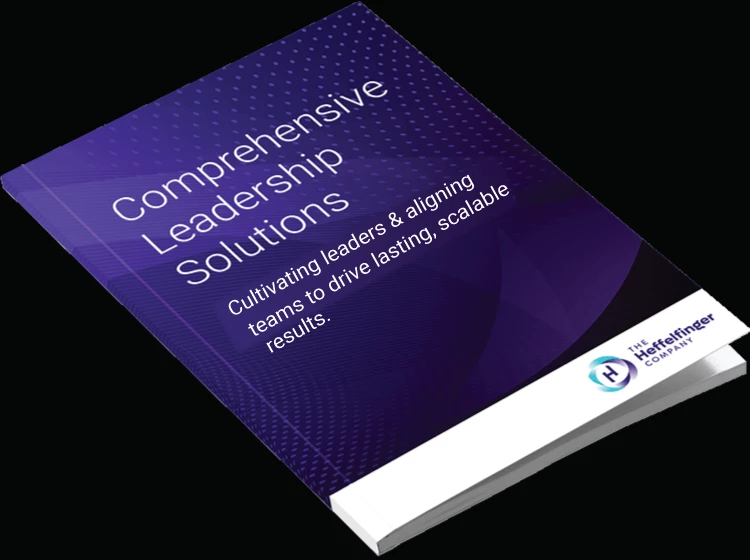“As leaders, it is important to askWhat Do You Stand For? and identify the steps you can take to support a culture of Diversity, Equity, Inclusion, and Belonging (DEIB) in your workplace.”
– Lori Heffelfinger
Commemorated annually on June 19th, Juneteenth marks a pivotal moment in American history: the emancipation of enslaved African Americans. Its significance extends beyond a historical milestone, serving as a powerful reminder of the ongoing struggle for racial equality and justice.
In the context of Diversity, Equity, Inclusion, and Belonging (DEIB) efforts in the workplace, Juneteenth highlights the critical need to acknowledge and address systemic inequities. Celebrating this day within organizations fosters a deeper understanding of the African American experience, promotes cultural awareness, and reinforces the commitment to creating an inclusive environment where all employees feel valued and respected. By integrating Juneteenth into DEIB initiatives that aim to build a more supportive and unified environment, companies can honor the past while actively working toward a more equitable future.
What Does it Mean to be an Ally?
True allyship goes beyond awareness and empathy; it requires intentional actions to dismantle systemic barriers, amplify diverse voices, and create a culture where every employee feels valued and empowered to thrive. By committing to continuous learning and advocacy, allies play a crucial role in driving meaningful change and promoting diversity, equity, inclusion, and belonging in the workplace.
Saida Grundy, assistant professor of sociology and African American studies at Boston University, said, “When offered in lieu of actionable policies regarding equity, consciousness-raising can actually undermine Black progress by presenting increased knowledge as the balm for centuries of abuse.” We must recognize the unique challenges faced by minorities and leverage our own privilege and influence to foster an inclusive, equitable environment.
How To Be an Ally
In her book How to Be an Inclusive Leader: Your Role in Creating Cultures of Belonging Where Everyone Can Thrive, Jennifer Brown provides a comprehensive guide on how to be an ally for Black, Indigenous, and People of Color ((BIPOC) in the workplace. Here are key strategies based on her insights:
1. Educate Yourself
One of the foundational steps to becoming an effective ally is self-education. Brown emphasizes the importance of understanding the experiences, challenges, and systemic barriers BIPOC individuals face. This involves reading, attending workshops, and actively seeking information about different cultures and identities. By educating yourself, you can better empathize with and support your colleagues.
2. Listen Actively
Active listening is crucial. Brown highlights that listening to and believing the stories and experiences of BIPOC colleagues without interrupting or offering unsolicited solutions shows respect and a willingness to understand their perspectives. Creating a safe space where individuals feel heard and valued is essential.
3. Speak Up and Advocate
Allies must use their privilege and position to advocate for BIPOC individuals. This means speaking up against discrimination, bias, and exclusion when they occur. Brown encourages allies to challenge inappropriate behavior and policies that disadvantage BIPOC employees, even if it means confronting uncomfortable truths or risking personal comfort.
4. Support Career Development
Brown underscores the importance of supporting the career advancement of BIPOC employees. This can involve mentoring, sponsoring, and providing opportunities for growth and visibility. Allies should advocate for fair and equitable hiring, promotion, and compensation practices to ensure that BIPOC employees have equal opportunities to succeed.
5. Promote Inclusive Policies
Creating and promoting inclusive workplace policies is essential. Brown suggests that allies work toward implementing policies that support diversity and inclusion, such as flexible working arrangements, bias training programs, and employee resource groups. These policies help create a more supportive and equitable environment for all employees.
6. Reflect and Act on Feedback
Receiving and acting on feedback is critical for growth as an ally. Brown advises allies to seek feedback from BIPOC colleagues about their allyship efforts and be open to making changes based on this feedback. This reflective practice helps in understanding the impact of one's actions and continuously improving allyship behaviors.
7. Build Diverse Networks
Expanding your network to include diverse individuals is another strategy Brown recommends. By building relationships with people from different backgrounds, allies can gain a broader perspective and become more effective in their support. Networking also demonstrates a commitment to diversity and inclusion.
8. Model Inclusive Behavior
Finally, Brown emphasizes that allies should model inclusive behavior in all their interactions. This includes being mindful of language, acknowledging and addressing biases, and consistently demonstrating respect and empathy towards all colleagues. Modeling such behavior sets a standard for others in the organization to follow.
By following these strategies, allies can meaningfully impact fostering an inclusive and supportive workplace environment for BIPOC employees. Brown’s book provides a valuable roadmap for those committed to creating a culture of belonging where everyone can thrive.
If you are wondering where you stand as an ally, here is a link to Jennifer’s free inclusive leader assessment: https://jenniferbrownspeaks.com/inclusive-leader-self-assessment/.
How Does Embracing DEIB Benefit Organizations?
DEIB benefits organizations by turning workplaces into vibrant centers of creativity and productivity. By embracing diversity, promoting equity, and fostering inclusion and belonging, organizations benefit from a wide range of perspectives and talents. This boosts innovation and creates an environment where everyone feels valued and empowered to contribute their best.
When DEIB is treated seriously, it becomes the foundation for workplaces that excel through collaboration, adaptability, and a shared mission. Ultimately, it's about ensuring everyone has an equal chance to succeed, with the collective strength of diverse minds driving the organization forward.
Benchmarking Your Organization for Inclusivity
Effective DEIB benchmarking naturally boosts competitiveness and enhances a positive brand image. Organizations that meet or exceed DEIB benchmarks stand out in the marketplace, attracting top talent and customers who prioritize diversity. Aligning with societal expectations and demonstrating a commitment to social responsibility become integral to an organization's identity, enhancing brand perception.
Organizations can use a variety of DEIB metrics to benchmark their current work environment and track progress. Here are some key metrics:
1. Demographic Data
Representation. Measure the diversity of the workforce across various dimensions (e.g., race, gender, age, disability status) at all levels, including leadership.
Hiring rates. Track the diversity of candidates at each stage of the hiring process to identify any biases.
2. Employee Engagement and Inclusion
Employee surveys. Use surveys to assess employees’ feelings of inclusion, belonging, and fairness.
Retention rates. Compare retention rates among different demographic groups to identify disparities.
Employee Resource Group (ERG) participation. Monitor participation and engagement in ERGs.
3. Career Progression and Development
Promotion rates. Measure promotion rates across different demographic groups to ensure equitable career advancement opportunities.
Training and development. Track participation in professional development and training programs by different demographic groups.
4. Pay Equity
Compensation analysis. Conduct regular pay equity analyses to ensure fair compensation across all demographic groups.
5. Work Environment and Culture
Incident reports. Track reports of discrimination, harassment, and bias incidents to gauge the work environment's inclusivity.
Exit interviews. Analyze feedback from exit interviews to identify DEI-related issues that may contribute to employee turnover.
6. External Recognition and Compliance
Awards and recognition. Track recognition and awards related to DEI from external organizations.
Compliance. Ensure adherence to relevant DEI-related laws and regulations and track any compliance issues.
7. Supplier Diversity
Supplier diversity spend. Measure the percentage of procurement spend with diverse suppliers.
By regularly collecting and analyzing these metrics, organizations can comprehensively understand their current DEI landscape, identify areas for improvement through agap analysis, and develop targeted strategies to foster a more inclusive and equitable work environment.
Empowering Organizational Transformation
As two white cisgender heterosexuals, we know we are still a work in progress. And that’s okay. As executive coaches, we specialize in facilitating organizational transformation guiding businesses through comprehensive strategies to achieve their fullest potential. Our expert team is dedicated to supporting your company's evolution toward greater success and sustainability. With our tailored approach, we empower organizations to cultivate environments of inclusivity, innovation, and excellence, ensuring a brighter future for all stakeholders involved. Contact us today to learn more!
Warmly,
Lori & James
Lori Heffelfinger & James Jackman
Source:
Jennifer Brown. October 4, 2022. How to Be an Inclusive Leader, second edition: Your Role in Creating Cultures of Belonging Where Everyone Can Thrive. California, Berrett-Koehler Publishers.
Samtosh. December 17, 2023. https://www.culturemonkey.io/employee-engagement/dei-benchmarks/#:~:text=realm%20of%20DEI%3A-,Strategic%20alignment,align%20with%20broader%20industry%20trends. Accessed 5/31/2024.
Saida Grundy. The False Promise of Anti-racism Books. July 21, 2020.https://www.theatlantic.com/culture/archive/2020/07/your-anti-racism-books-are-means-not-end/614281/. Accessed 5/31/2024.







